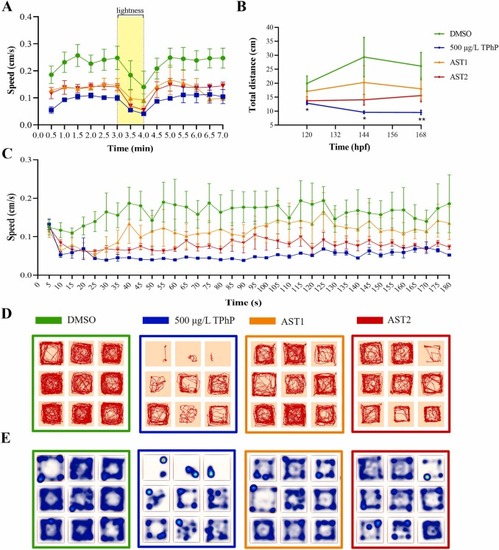Fig. 4
- ID
- ZDB-FIG-240408-28
- Publication
- Zhang et al., 2024 - Astaxanthin activates the Nrf2/Keap1/HO-1 pathway to inhibit oxidative stress and ferroptosis, reducing triphenyl phosphate (TPhP)-induced neurodevelopmental toxicity
- Other Figures
- All Figure Page
- Back to All Figure Page
|
Astaxanthin (AST) can partially rescue the neurobehavioral disorders induced by TPhP. (A) The velocity of zebrafish larvae (at 6 dpf) was recorded in the DMSO, TPhP (500 μg/L), AST1: TPhP (500 μg/L) + AST (30 nM) and AST2: TPhP (500 μg/L) + AST (100 nM) groups, respectively (Model A). (B) The total distance traveled was calculated in each group (Model B). (C) The velocity of zebrafish larvae (at 6 dpf) was recorded in each group (Model B). (D) The tracking paths of zebrafish from each experimental group were shown in the figure. (E) A heatmap showing the path followed by nine zebrafish from each experimental group. The blue marks indicate the area the zebrafish passed through, and the depth of color represents cumulative frequency. Values represent mean ± SEM. In comparison with the control group, * p < 0.05, * * p < 0.01 (one-way ANOVA and LSD test was employed). |

